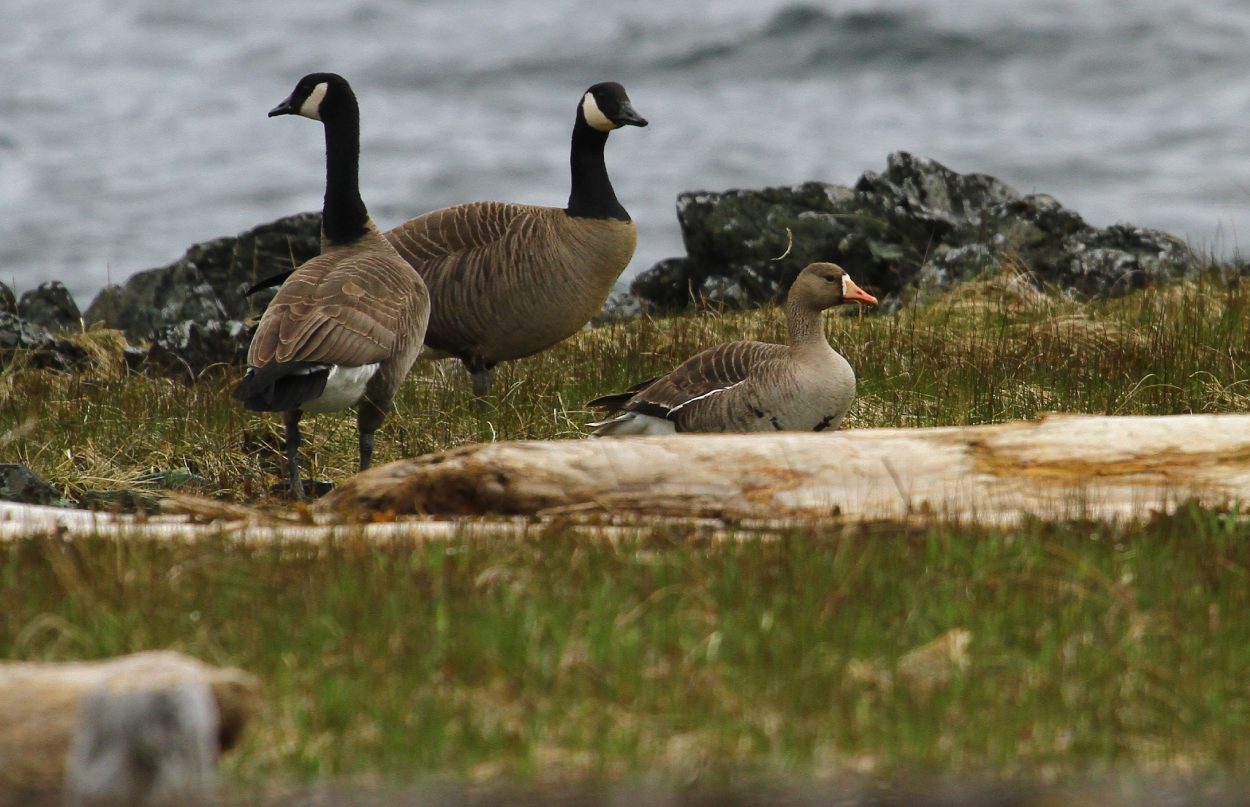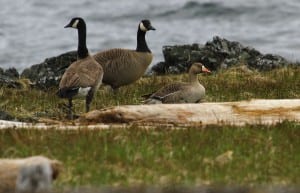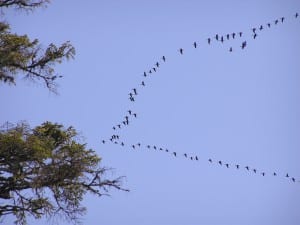Tens of thousands of migratory geese flew over Ketchikan Monday morning and early afternoon on their way to breeding grounds farther north. Residents went to social media to post photos and videos of the event.
Local bird expert Andy Piston says conditions were just right for migration.
“We’re right in the peak timing, especially for geese. We should start seeing big movements this time of year and I think the weather change we got today and that big storm sent them over Ketchikan.”
A storm on Sunday led to 3 point 5 inches of rain with sometimes strong wind. Piston says most of the birds were greater white-fronted geese.
“Some people call them speckled bellies. They’re a little bit smaller than Canada geese, and they’re moving through by the tens of thousands today. There are also Canada geese and cackling geese in some of these flocks. Some of the flocks had a few snow geese mixed in with them.”
Within a two-hour period, Piston says he counted at least 35,000 birds but estimated there were likely more than 40,000. He says the different species of geese and ducks he observed are heading to various locations in northern Alaska, Canada and Russia. Piston says the greater white-fronted geese migrate to several areas.
“There are a couple of different races of greater white-fronted geese. A lot of them breed through Arctic Alaska, Western Alaska, and there’s a race that breeds in the Cook Inlet Area as well.”
Piston says this was one of the best movements he’s seen, but large migrations are not uncommon.
“We do see huge movements like this in most years, at least for a couple of days, but this is definitely a very, very good one.”
Piston says the birds didn’t stop in the First City because there is no extensive, quality goose habitat along the Ketchikan road system. He says many of the birds likely will feed and rest in the Stikine River area for a few days before moving on. Piston says the next three weeks are peak migration times not just for geese, but shorebirds and other species breeding in Alaska.








